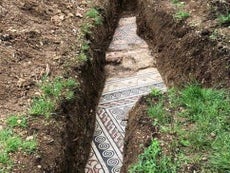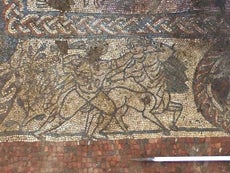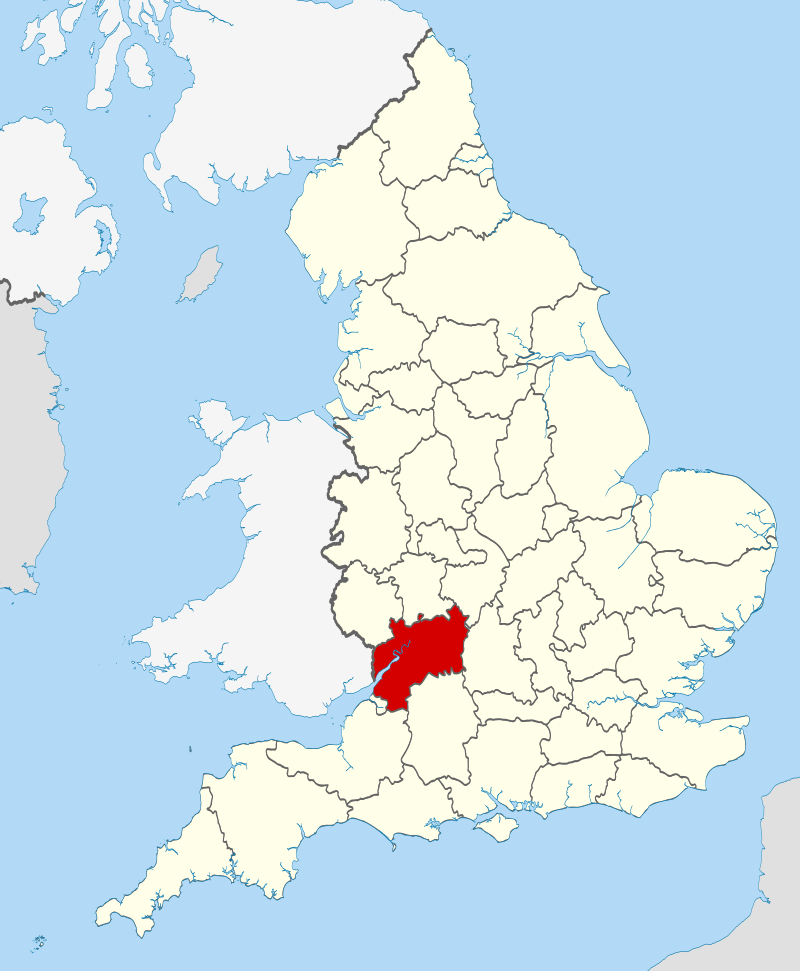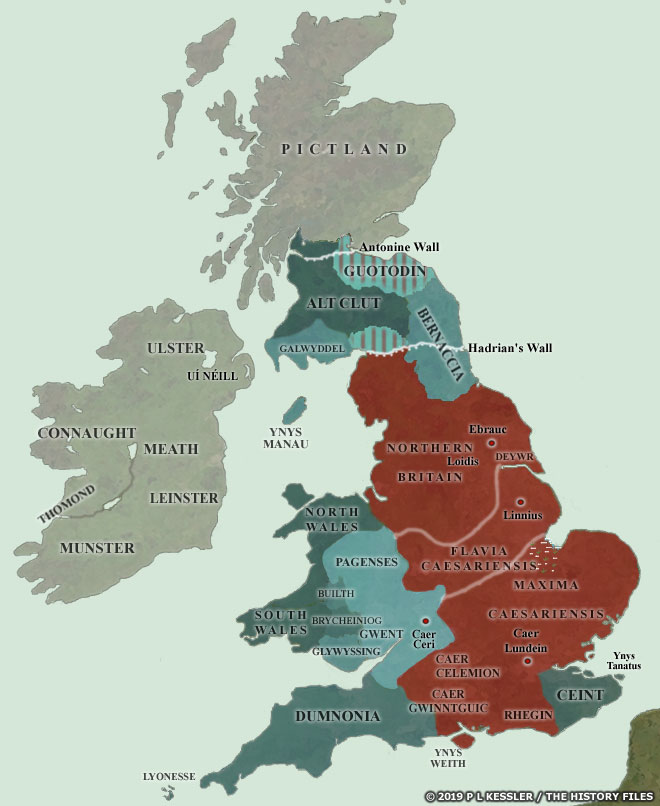Melodi
Disaster Cat
I am posting this both because it is historically interesting, but also because it shows that it is possible to maintain "pockets" of civilization (in this case Roman Civilization) for even a couple of centuries after the "center no longer holds." I thought this was an important and interesting bit of information for a "prepper site" and that it also shows that the "city-state" model may be another way to plan, not just "da little house in da big woods." A city-state run along with whatever "modern" lines one is familiar with, would also be a foundation point and trading centers for a lot of homesteaders, I suspect these people still had a small "standing army" or military built on Roman military foundations, though much smaller. This article doesn't mention it, but this is also one of the periods suggested for a historical Arthur and his buddies.
Those story cycles suggested quite a number of independent and thriving kingdoms during the early "dark ages" and it looks like historical that was probably true. The re-dating of a lot of British sites with the understanding that Roman Culture may have lasted a lot longer than centralized Roman rule from Rome is really thought-provoking. It shows it is possible for determined citizens to "keep of the standards" and even international trade after their main empire collapses. - Melodi

 www.independent.co.uk
NewsScienceArchaeology
www.independent.co.uk
NewsScienceArchaeology
Mosaic discovery sheds fresh light on England’s early medieval history
New discovery suggests pockets of Roman civilisation survived even after collapse of Imperial Roman authority in Britain
David Keys@davidmkeys
13 hours ago
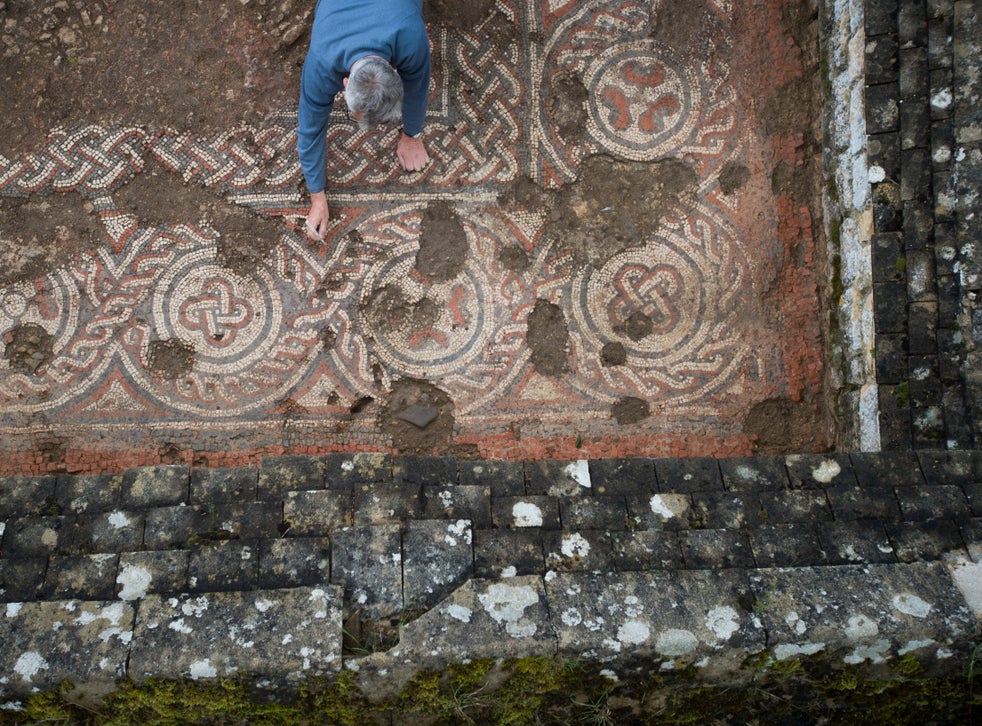
National Trust archaeologists & volunteers digging in the northern wing of the villa
(NT Stephen Haywood)
A remarkable archaeological discovery in southwest England is helping to rewrite the country's early medieval history.
A recently discovered Roman-style mosaic is providing extraordinary new evidence that Roman civilisation didn't universally collapse after Imperial Roman authority came to an end in Britain.
Scientists have dated the mosaic – found in Gloucestershire in 2017 - to the mid or later fifth century, a generation or more after Britain ceased to be part of the Roman Empire in 410 AD.
The dating of the mosaic – and other discoveries elsewhere in western England and Wales – suggests that pockets of Roman civilisation survived to varying degrees in several different parts of Britain, including Cornwall, Shropshire and Gloucestershire, where the mosaic was discovered.
ADVERTISING
It is the first time in Britain that archaeologists have been able to date a mosaic to the post-Roman period.
The discovery is additional evidence revealing that Britain's 'Dark Age' wasn't universally as dark as often portrayed.
Read more
The newly dated 'Dark Age' mosaic was discovered in one of Britain's most beautifully located and famous Roman villas - Chedworth in Gloucestershire.
Please enter your email addressPlease enter a valid email addressPlease enter a valid email address
SIGN UP
The Independent would like to keep you informed about offers, events and updates by email, please tick the box if you would like to be contacted
Read our full mailing list consent terms here
The new fifth century dating strongly suggests that several other mosaics at Chedworth and elsewhere in Gloucestershire don't date from the period of Roman rule in Britain, but from after it collapsed.
What's more, the new research at that villa and elsewhere suggests that the Gloucestershire area may well have been a well-run Roman-style mini-state, whose inhabitants continued to enjoy a Roman lifestyle long after the empire's legions had left Britain.
Other evidence from Chedworth reveals that it may have been a particularly important villa – potentially of substantial political significance.
Not only have archaeologists found the post-Roman mosaic at Chedworth – but they have also found evidence of ceramics and posh marble imported from the eastern Mediterranean
At the very least, it suggests that Chedworth's Roman and post-Roman owners were of very high status.

A complete view of the remains of the mosaic
(National Trust-Mike Calnan)
It is likely that the villa was owned by an important late Roman family who may well have stayed in Britain after the collapse of imperial authority.
In Gloucestershire and many other areas, local Roman-style government continued after Imperial rule of Britain as a whole had come to an end – and it is likely that the family which owned Chedworth would have been represented in the Gloucestershire area's local administrative council. Indeed, Chedworth was the nearest large villa to the important roman city of Cirencester where that council (the local 'curia') would have held its meetings.
A rare find at the villa, an inscribed silver spoon, actually reveals the name of it's probable late Roman owner, a man called Censorinus - and his descendants may well have continued to run Chedworth well after the Roman legions had departed.
Certainly in the fifth century, the villa's owner was importing very posh tableware from North Africa and in the fifth or sixth century was importing wine from Palestine.
Along with the post Roman mosaic, that strongly suggests that the family who lived there in the so-called Dark Ages were culturally Roman and of great wealth and importance.
At some stage between 410 AD and 577 AD, the Gloucestershire area changed from being a Roman-style 'county' to being an independent kingdom.
That is known because the Anglo-Saxon Chronicle entry for 577 A.D. reveals that, prior to that date, there had been a small British (rather than Anglo-Saxon) kingdom in the Cirencester area.

A group of volunteers uncovering the mosaic
(National Trust-Barry Batchelor)
In Roman times, Cirencester had been both a provincial capital and the seat of the local 'county' (i.e. sub provincial) administration. Ever since Iron Age times, the area had been home to a tribe called the Dobunni - and it is therefore conceivable that that was the name of the Cirencester-centred mini-kingdom alluded to in the Anglo-Saxon Chronicle.
What's more, a huge complex of high status buildings was built in Cirencester in the late Roman period and refurbished and embellished, potentially in the post-Roman era – perhaps some time in the first half of the fifth century (the same period that saw at least one building remodelled, complete with mosaics, at Chedworth).
Nobody yet knows why that Cirencester complex was built and enlarged – but it is conceivable that it somehow came to be associated with the emergence of the area's post-Roman independent Dark Age mini-state.
So far, Chedworth's mosaic is the only one to have been scientifically dated to the 5th century (by radiocarbon-dating the building it was made for).
But other Roman-style mosaics in and around Gloucestershire are now likely to be reassessed to see whether they are in fact 'Dark Age', rather than conventionally Roman.
The newly-dated Chedworth mosaic was 7.6 metres square – and consisted of 350,000 red, blue, white and brown tesserae, arranged in geometric and floral patterns.
Intriguingly, recent research suggests that the Cirencester area was home to one of Dark Age Britain's most famous people – a sixth century historian called Gildas (one of Britain's earliest known authors).
Read more
He was almost certainly from a wealthy background – but whether he had any links to Chedworth is as yet unknown.
The investigations into the villa have been directed by National Trust archaeologist, Martin Papworth.
“This 5th century date was so different from what is generally thought that, after discussions with the National Trust’s expert advisors, a second radiocarbon date was needed alongside pottery analysis before I could be sure,” said Dr Papworth.
“I am still reeling from the shock of this dating," said a leading Roman mosaic specialist, Dr Stephen Cosh,
One of Britain's top experts on fifth and sixth century archaeology, Professor Ken Dark of the University of Reading, author of Britain and the End of the Roman Empire, told The Independent that "the implications of the mosaic's date are substantial".
"It demonstrates the survival of Roman culture in a key area of Britain long after Roman Imperial rule had ended", he said.
Chedworth Roman villa is owned by the National Trust and will be open to the public from 13 February.
Those story cycles suggested quite a number of independent and thriving kingdoms during the early "dark ages" and it looks like historical that was probably true. The re-dating of a lot of British sites with the understanding that Roman Culture may have lasted a lot longer than centralized Roman rule from Rome is really thought-provoking. It shows it is possible for determined citizens to "keep of the standards" and even international trade after their main empire collapses. - Melodi

Mosaic discovery sheds fresh light on England’s early medieval history
New discovery suggests pockets of Roman civilisation survived even after collapse of Imperial Roman authority in Britain
Mosaic discovery sheds fresh light on England’s early medieval history
New discovery suggests pockets of Roman civilisation survived even after collapse of Imperial Roman authority in Britain
David Keys@davidmkeys
13 hours ago

National Trust archaeologists & volunteers digging in the northern wing of the villa
(NT Stephen Haywood)
A remarkable archaeological discovery in southwest England is helping to rewrite the country's early medieval history.
A recently discovered Roman-style mosaic is providing extraordinary new evidence that Roman civilisation didn't universally collapse after Imperial Roman authority came to an end in Britain.
Scientists have dated the mosaic – found in Gloucestershire in 2017 - to the mid or later fifth century, a generation or more after Britain ceased to be part of the Roman Empire in 410 AD.
The dating of the mosaic – and other discoveries elsewhere in western England and Wales – suggests that pockets of Roman civilisation survived to varying degrees in several different parts of Britain, including Cornwall, Shropshire and Gloucestershire, where the mosaic was discovered.
ADVERTISING
It is the first time in Britain that archaeologists have been able to date a mosaic to the post-Roman period.
The discovery is additional evidence revealing that Britain's 'Dark Age' wasn't universally as dark as often portrayed.
Read more
The newly dated 'Dark Age' mosaic was discovered in one of Britain's most beautifully located and famous Roman villas - Chedworth in Gloucestershire.
Please enter your email addressPlease enter a valid email addressPlease enter a valid email address
SIGN UP
The Independent would like to keep you informed about offers, events and updates by email, please tick the box if you would like to be contacted
Read our full mailing list consent terms here
The new fifth century dating strongly suggests that several other mosaics at Chedworth and elsewhere in Gloucestershire don't date from the period of Roman rule in Britain, but from after it collapsed.
What's more, the new research at that villa and elsewhere suggests that the Gloucestershire area may well have been a well-run Roman-style mini-state, whose inhabitants continued to enjoy a Roman lifestyle long after the empire's legions had left Britain.
Other evidence from Chedworth reveals that it may have been a particularly important villa – potentially of substantial political significance.
Not only have archaeologists found the post-Roman mosaic at Chedworth – but they have also found evidence of ceramics and posh marble imported from the eastern Mediterranean
At the very least, it suggests that Chedworth's Roman and post-Roman owners were of very high status.

A complete view of the remains of the mosaic
(National Trust-Mike Calnan)
It is likely that the villa was owned by an important late Roman family who may well have stayed in Britain after the collapse of imperial authority.
In Gloucestershire and many other areas, local Roman-style government continued after Imperial rule of Britain as a whole had come to an end – and it is likely that the family which owned Chedworth would have been represented in the Gloucestershire area's local administrative council. Indeed, Chedworth was the nearest large villa to the important roman city of Cirencester where that council (the local 'curia') would have held its meetings.
A rare find at the villa, an inscribed silver spoon, actually reveals the name of it's probable late Roman owner, a man called Censorinus - and his descendants may well have continued to run Chedworth well after the Roman legions had departed.
Certainly in the fifth century, the villa's owner was importing very posh tableware from North Africa and in the fifth or sixth century was importing wine from Palestine.
Along with the post Roman mosaic, that strongly suggests that the family who lived there in the so-called Dark Ages were culturally Roman and of great wealth and importance.
At some stage between 410 AD and 577 AD, the Gloucestershire area changed from being a Roman-style 'county' to being an independent kingdom.
That is known because the Anglo-Saxon Chronicle entry for 577 A.D. reveals that, prior to that date, there had been a small British (rather than Anglo-Saxon) kingdom in the Cirencester area.

A group of volunteers uncovering the mosaic
(National Trust-Barry Batchelor)
In Roman times, Cirencester had been both a provincial capital and the seat of the local 'county' (i.e. sub provincial) administration. Ever since Iron Age times, the area had been home to a tribe called the Dobunni - and it is therefore conceivable that that was the name of the Cirencester-centred mini-kingdom alluded to in the Anglo-Saxon Chronicle.
What's more, a huge complex of high status buildings was built in Cirencester in the late Roman period and refurbished and embellished, potentially in the post-Roman era – perhaps some time in the first half of the fifth century (the same period that saw at least one building remodelled, complete with mosaics, at Chedworth).
Nobody yet knows why that Cirencester complex was built and enlarged – but it is conceivable that it somehow came to be associated with the emergence of the area's post-Roman independent Dark Age mini-state.
So far, Chedworth's mosaic is the only one to have been scientifically dated to the 5th century (by radiocarbon-dating the building it was made for).
But other Roman-style mosaics in and around Gloucestershire are now likely to be reassessed to see whether they are in fact 'Dark Age', rather than conventionally Roman.
The newly-dated Chedworth mosaic was 7.6 metres square – and consisted of 350,000 red, blue, white and brown tesserae, arranged in geometric and floral patterns.
Intriguingly, recent research suggests that the Cirencester area was home to one of Dark Age Britain's most famous people – a sixth century historian called Gildas (one of Britain's earliest known authors).
Read more
He was almost certainly from a wealthy background – but whether he had any links to Chedworth is as yet unknown.
The investigations into the villa have been directed by National Trust archaeologist, Martin Papworth.
“This 5th century date was so different from what is generally thought that, after discussions with the National Trust’s expert advisors, a second radiocarbon date was needed alongside pottery analysis before I could be sure,” said Dr Papworth.
“I am still reeling from the shock of this dating," said a leading Roman mosaic specialist, Dr Stephen Cosh,
One of Britain's top experts on fifth and sixth century archaeology, Professor Ken Dark of the University of Reading, author of Britain and the End of the Roman Empire, told The Independent that "the implications of the mosaic's date are substantial".
"It demonstrates the survival of Roman culture in a key area of Britain long after Roman Imperial rule had ended", he said.
Chedworth Roman villa is owned by the National Trust and will be open to the public from 13 February.

